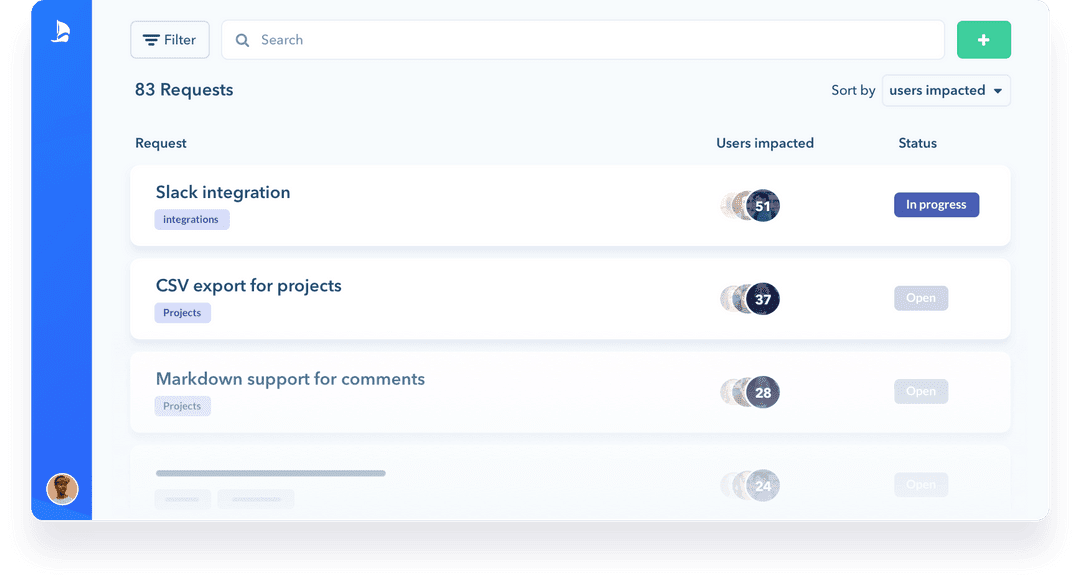Built With MongoDB: Shipright
User research is fundamental to guide great design and define a company’s brand and viability.
For this edition of #BuiltWithMongoDB, we are featuring Shipright, a Netherlands-based Techstars company from the Netherlands that enables software businesses to seamlessly track customer feedback and make better-informed product decisions.
Shipright provides a central place for user feedback, collating suggestions that customer support receives and sharing it across the company. The tool allows product managers to connect with customers who have left feedback, and ask for more details or provide personalized updates.
Merging customer feedback ―traditionally spread around the company and left forgotten inside support conversations―into the product development process enables product people to deeper understand, and act upon, user requests.
We spoke with co-founder Steven Aanen about Shipright’s journey to centralize product feedback and how they are growing with MongoDB.
How did the idea for Shipright come about?
As a team of four college friends, we had collaborated on software products for several years and repeatedly saw how difficult it is for companies to understand what their users really need. The result is that product teams are too-often building based on the input of the loudest person in the room, typically one angry customer or a product manager’s gut feel.
With many new products hitting the market, and the cost of switching between them being so low, companies that fail to build something users love won’t survive for long.
The good thing is that software companies actually get lots of feedback through customer support, live chat, and online reviews. The problem is that this feedback lives in many places and across different teams. There wasn’t any way to get a clear picture of, and act upon, a user’s perspective. That’s why we created Shipright.
Shipright allows companies to easily collect feedback in one centralized location so that product teams get a clear sense of what matters. All feedback is transparent, from real users with associated identities, making it approachable and possible to open a dialogue. Teams that use Shipright collaborate with users to build with them instead of for them.
What were some of the early challenges in building Shipright?
Product management is inherently a very complex and messy process. There are many factors that come into play when defining product strategy. The challenge was to help streamline the process without creating a solution that is too complex or creates unnecessary overhead. We wanted to make it possible for any team to create amazing products. We pivoted a few times, from focusing on user research to incorporating user perspective deeply into product roadmaps.
Another challenge is dealing with the variety of systems in which feedback and user data lives. Our solution is to offer a browser plugin that consolidates feedback across several channels and integrations.
What technologies are you using to help build Shipright?
Shipright is built in Vue.js, Typescript, NodeJS, and, of course, MongoDB. We run the platform on Kubernetes, where we also deployed a bunch of microservices and a message queue to process asynchronous jobs.
A fun fact is that every customer has their own database, which is something we started with to ensure data protection.
Why did you decide to have Shipright #BuiltWithMongoDB?
MongoDB allows us to be flexible as we learn to support our customers in the best possible way. Functionality changes regularly, and it’s super important for us to be able to adapt our course as needed.
We initially picked MongoDB for quick prototyping of the MVP that would later become Shipright, and it stuck. At first, we hosted the product ourselves, which quickly became very challenging. We regularly had to pause our work to fix things in production. With help of our friend David Asabina, we switched to a new hosting infrastructure, including MongoDB Cloud. That really helped us to get our focus back on product development instead of managing servers.
Now that we have worked with MongoDB for nearly four years, we deeply understand the API and leverage our compounded knowledge to ship updates even faster.
Which MongoDB products do you use to power Shipright?
Our hosting infrastructure is defined using Terraform. We have a staging cluster and production cluster in MongoDB Atlas, and if necessary, we can spawn up a new cluster that looks exactly the same. On every signup, one of our microservices creates and prepares a new database specifically for that customer.
In the near future, we’d like to try out Atlas Search as well, as we rely heavily on search engines to power the product. We’re fans of the MongoDB ecosystem and are excited to grow with the platform.

Looking to build something cool? Get started with the MongoDB for Startups program.